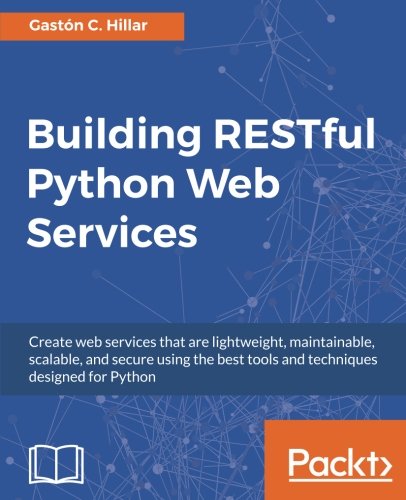
Building RESTful Python Web Services
- Length: 335 pages
- Edition: 1
- Language: English
- Publisher: Packt Publishing
- Publication Date: 2016-12-06
- ISBN-10: 1786462257
- ISBN-13: 9781786462251
- Sales Rank: #1795683 (See Top 100 Books)
Create web services that are lightweight, maintainable, scalable, and secure using the best tools and techniques designed for Python About This Book Develop RESTful Web Services using the most popular frameworks in Python Configure and fine-tune your APIs using the best tools and techniques available This practical guide will help you to implement complete REST-based APIs from scratch Who This Book Is For This book is for web developers who have working knowledge of Python and would like to build amazing web services by taking advantage of the various frameworks of Python. You should have some knowledge of RESTful APIs. What You Will Learn Develop complex RESTful APIs from scratch with Python combined with and without data sources Choose the most appropriate (micro) framework based on the specific requirements of a RESTful API / web service Debug, test, and profile RESTful APIs with each of the frameworks Develop a complex RESTful API that interacts with a PostgreSQL database Add authentication and permissions to a RESTful API built in each of the frameworks Map URL patterns to request handlers and check how the API works Profile an existing API and refactor it to take advantage of asynchronous code In Detail Python is the language of choice for millions of developers worldwide, due to its gentle learning curve as well as its vast applications in day-to-day programming. It serves the purpose of building great web services in the RESTful architecture. This book will show you the best tools you can use to build your own web services. Learn how to develop RESTful APIs using the popular Python frameworks and all the necessary stacks with Python, Django, Flask, and Tornado, combined with related libraries and tools. We will dive deep into each of these frameworks to build various web services, and will provide use cases and best practices on when to use a particular framework to get the best results. We will show you
Table of Contents
Chapter 1. Developing RESTful APIs with Django
Chapter 2. Working with Class-Based Views and Hyperlinked APIs in Django
Chapter 3. Improving and Adding Authentication to an API With Django
Chapter 4. Throttling, Filtering, Testing, and Deploying an API with Django
Chapter 5. Developing RESTful APIs with Flask
Chapter 6. Working with Models, SQLAlchemy, and Hyperlinked APIs in Flask
Chapter 7. Improving and Adding Authentication to an API with Flask
Chapter 8. Testing and Deploying an API with Flask
Chapter 9. Developing RESTful APIs with Tornado
Chapter 10. Working with Asynchronous Code, Testing, and Deploying an API with Tornado
Chapter 11. Exercise Answers







